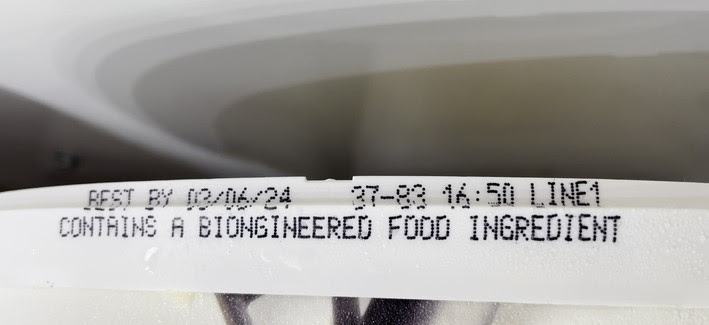- Categories :
- More
Bioengineered Food: Are You Eating It?

by Mila McManus, MD
The requirement to disclose bioengineered food became effective in 2022. Unfortunately, the final rule released by the Department of Agriculture in 2018 allowed many circumstances in which bioengineered food can be kept private from US consumers so that you may be eating it! Bioengineering is synonymous with GMOs, genetically modified organisms, and genetically engineered products.
How is Genetic Modification Done?
Genetic modification is accomplished when scientists introduce genetic material [DNA] from a different organism into another plant or animal. Usually, this is done by transferring new DNA into a different plant cell and growing those cells in a tissue culture until the plant develops. Then, the new plant produces the seeds used by farmers who farm GMO crops. Bioengineering food aims to make it more resistant to harsh climates, insects, or viruses, thus increasing production volume.
Is Bioengineering Safe?
Many people have concerns about the safety of bioengineered foods. Research is ongoing and unclear, and the long-term effects on safety are unknown. The National Academy of Sciences and the FDA claim that bioengineered foods are safe to eat and pose no risk to your health. However, there are reports of allergic reactions, concerns that they may contribute to cancer development, and a theoretical risk that consuming them could result in antibiotic resistance. Nutrient density has also decreased, posing additional concerns.
There are also environmental concerns. According to the Environmental Working Group [EWG.org], the hope was that GMO crops would require less herbicide use and increase yields. However, over the past twenty years, the use of glyphosate, the active ingredient in Monsanto’s Roundup herbicide, has increased vastly. Glyphosate has been classified as a carcinogen. Unfortunately, that means genetically modified foods are also laden with a potentially carcinogenic herbicide.
How Do I Know If a Food is Genetically Modified?
Manufacturers can disclose that a food contains genetically engineered ingredients in four ways. The first is to write “contains bioengineered ingredients” on the package. A second way manufacturers can opt to disclose is by displaying the USDA bioengineered symbol on the back of the package.
A third way is for the manufacturer to include a QR code on the food package that takes you to an online webpage with the disclosure information. Lastly, the manufacturer can provide a phone number on the package to call and ask about the genetically engineered ingredients.
Common GMO Foods
Over 90% of sugar beet, canola, corn, soybeans, and cotton [the source of cottonseed oil] in the United States are bioengineered. In addition, some potatoes, summer squash, papaya, apples, and alfalfa are also genetically modified. Atlantic Salmon have been genetically engineered since 2015, as have other farm-raised fish such as trout, catfish, tilapia, and flounder. Many GMO crops also become “other ingredients” listed on product labels. For example, corn appears as cornstarch, corn syrup, or corn oil. Where sugar is used, it is most often sourced from genetically modified sugar beets.
Our Thoughts
Our medical and nutritional expertise, and instincts, tell us the human body functions best with normal, nature-made food rather than food altered by science. Due to the lack of research and the substantial increase in inflammatory diseases, including cancer, diabetes, autoimmunity, allergies, and cardiovascular disease, it seems prudent to avoid genetically modified foods whenever possible. The USDA Organic certification does not allow bioengineering or pesticides, so buying organic food is the best option. Another good option is to purchase foods with the Non-GMO Project Verified symbol.
Be wise. Eat real food.
Resources:
https://allianceforscience.org/blog/2022/02/understanding-the-new-us-bioengineered-disclosure/
https:www.ewg.org/news-insights/news/are-gmos-bad-environment








![Foods With The Most Microplastics [and what to do instead] Foods With The Most Microplastics [and what to do instead]](/images/blgs/398/artphotos/14698/200x150/031unnamed_9.jpg)








